Wastewater treatment plants require much maintenance to ensure smooth operation. This article explains how graphite/metal alloy bushings can reduce the cost of components by more than a third while greatly increasing reliability and eliminating many hours of maintenance.
There is a great deal of maintenance required at a wastewater treatment plan. Personnel must be constantly on the lookout for rust, clogs, flow restrictions, and component damage to ensure smooth operation. With so many tasks to address, a smart approach is to take as many manual, repetitive tasks out of the equation as possible. Take lubrication, for example. Parts that need lubricating on a weekly or monthly basis can become areas of neglect. Beyond forgetfulness, emergencies in other areas can lead to standard maintenance actions taking a backseat.
Case study
A wastewater facility with 10 machines used for filtration and two filters per machine would require about five minutes to lubricate per month per filter. That’s 100 minutes per month, at a rough labor cost of $300, which adds up to $3,600 per year. “With a 20-year lifespan expected for wastewater filtration equipment, the elimination of the labor involved in lubrication can really add up,” said Jay Stevens, President and Owner of Five Star Filtration. “But neglect of regular lubrication can cost far more if a failure results.”
By using graphite/metal alloy bushings by Graphite Metallizing Corp, he was able to help several of his clients to reduce the cost of components by more than a third while greatly increasing reliability and eliminating many hours of maintenance.
Maintenance concerns
Based in Conroe, Texas, Five Star Filtration has been in business since 1992. It designs equipment primarily for the municipal wastewater market, with multiple manufacturing venues to assemble and fabricate its equipment. The first product it introduced was a cloth disk filter for the municipal and industrial water reuse market. The company added a disk filter design in 2008 and an up-flow sand filter design in 2009. There are over 40 disk filter installations and more than 25 sand flow installations in existence currently.
The Five Star disk filter is designed as a continuously operating system that utilizes a fixed filter disk and a rotating backwash system controlled by a Programmable Logic Controller (PLC) or relay control panel. A fixed-disk design reduces overall horsepower and permits removal of each individual disk while the filter remains in operation. The filter disks remain fixed while the rotating center shaft supports the backwash arms, and serves as a header for removal of solids from the filter.
At the beginning of the timed backwash cycle, which is initiated by an increase in head loss across the filter, electrically actuated valves segregate the backwash header and clean the filter disks associated with that portion of the header. This ensures complete cleaning of the filter cloth while minimizing the rate at which backwash water is returned to the treatment facility.
All internal and submerged components are corrosion-resistant stainless steel or non-metallic materials. Equipment can be placed in concrete basins, carbon steel painted fiberglass, or stainless-steel vessels.
The cloth is capable of solids capture down to 10 microns without having to build up a filter mat or require any run-in time. The two-layer cloth utilizes filtered water from inside the disk for cleaning. The filter cloth is supplied as a sealed bag that can be replaced and re-installed without interrupting filter operation.
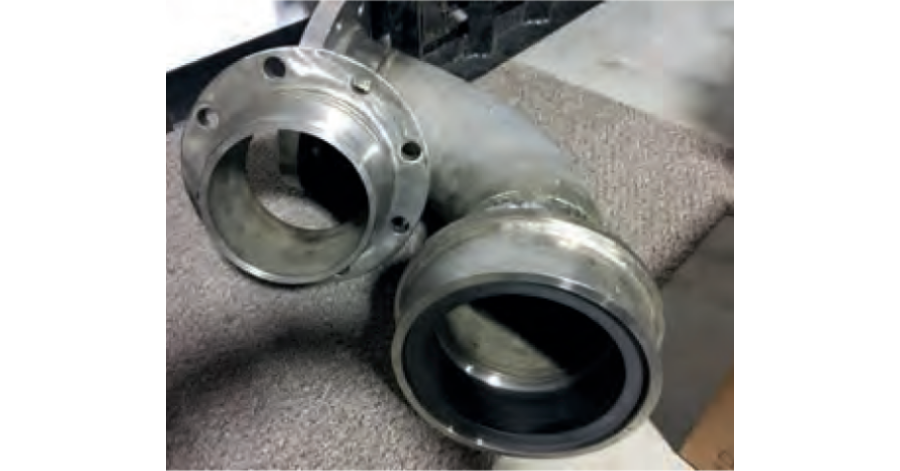
The swivel joint, showing the black Graphalloy graphite metal inside the joint.
Joint problem
However, a problem cropped up in one of the joints used in the filter. The disk filter has a rotor that turns paddles to clean the filters. The rotor has a hollow core that sucks water up through the core to send to the rest of the process. It consists of multiple disks in a plane with a pipe in the center and a swivel joint at each end, in both 3 in and 6 in sizes.
The swivel joint created a seal between the rotor and a pipe attached to a pump. This joint needed periodic lubrication to keep it working correctly. “As the swivel joint was submerged, maintenance staff would sometimes forget that it was there and did not always lubricate it properly,” said Stevens. “This led to periodic breakdowns and customer dissatisfaction.”
His attention was drawn to Graphalloy, a trade name for the graphite/metal alloy self-lubricating bearing materials developed by Graphite Metallizing Corp of Yonkers, NY. There are more than 100 grades of this product designed for different conditions. The right grade depends upon the temperature, pumpage, load, speed, type of pump, and other factors. Graphalloy is non-galling, corrosion-resistant, dimensionally stable, and can operate at temperatures from cryogenic to higher than 1000°F (538°C).
Engineers from both companies worked together to develop a bearing design that could be pressed into the swivel joint housing. This replaced the grease-lubricated ball bearings in the joint.
Users in the wastewater field, however, can be demanding. Stevens wanted to see how this new approach would work in the field before broadly publicizing it. Accordingly, Five Star subjected the application to two years of operation in the field. The company closely monitored this site to ensure everything worked properly. The redesign would have to be able to withstand harsh operation conditions, as well years of potential maintenance neglect. “Having passed that test, we decided to make Graphalloy a standard option for the Five Star disk filter,” said Stevens.
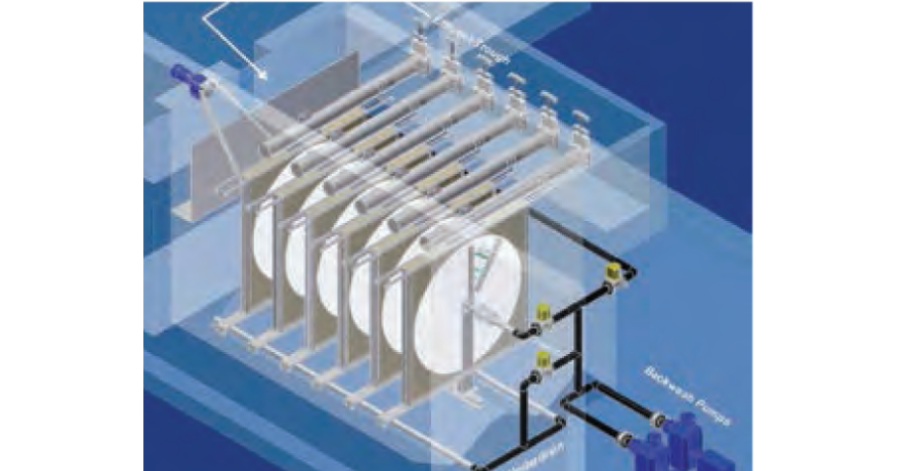
The Five Star Disk Filter: The white disks are the filtration media. The swivel joints (silver/yellow) contain the Graphalloy bearings.
24/7 operation
Four years have passed since that test and Five Star now has three customers successfully using the redesigned self-lubricating bearings. Stevens has kept a close eye on how it is doing in the field.
“Despite many years of non-stop, 24/7 operation, we have never had to take the Graphalloy parts out of service,” he said.
For the last couple of years, the company has offered its clients a lubricated or non-lubricated option. He has decided to end production of the lubricated swivel joint and make the self-lubricating bearings the standard for this filtration equipment going forward.
Due to its success in the swivel joint, Stevens also replaced the pillow blocks on the disk filter with Graphalloy inside the stainless-steel pillow blocks. “We can offer our customers a 40% savings compared to the previous ball bearing design,” said Stevens. “But more importantly, we are offering a better product that they can just install and forget about without ever having to lubricate it.”
Originally published in Filtration+Separation.
Read more about Graphalloy graphite/metal alloy bushings!


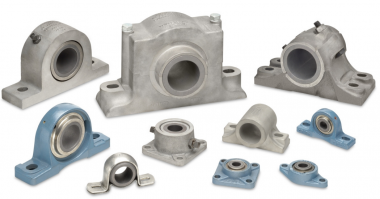
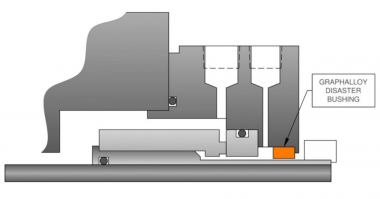
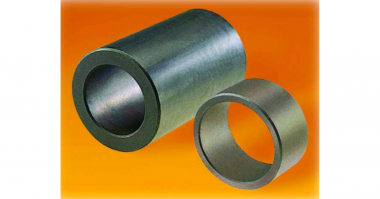
Comments